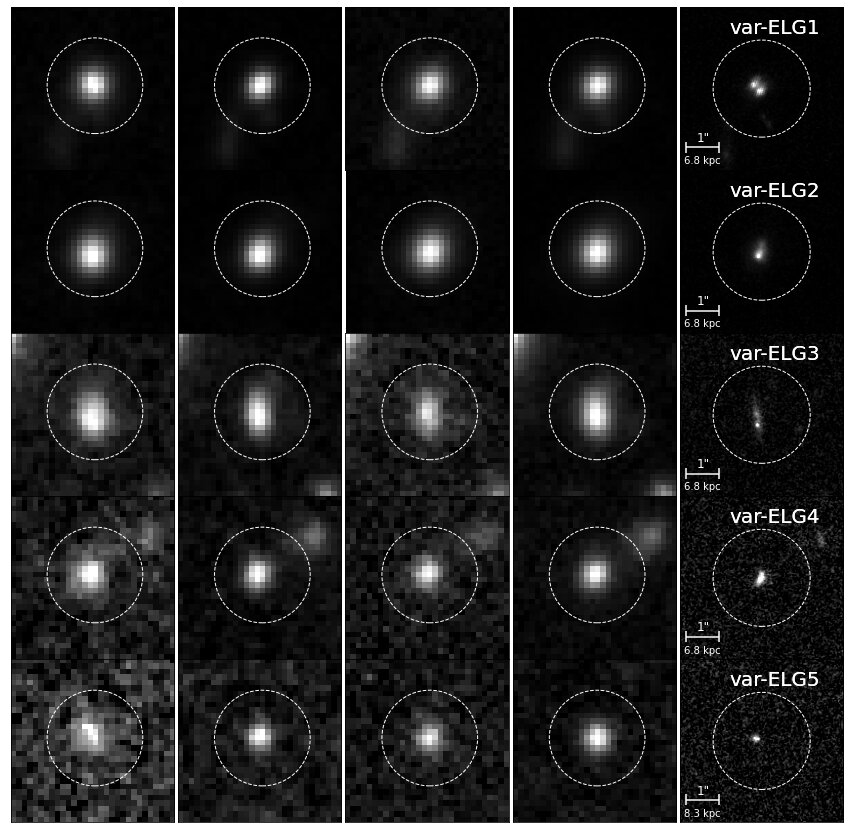New Chinese language analysis means that optical variability in emission-line galaxies (ELGs) is probably going attributable to star-formation exercise reasonably than the exercise of supermassive black holes.
The examine, carried out by astronomers from the Shanghai Astronomical Observatory (SHAO) of the Chinese language Academy of Sciences (CAS) together with scientists from the College of Science and Expertise of China, Yunnan Observatories, and the Polar Analysis Institute of China, was revealed in The Astrophysical Journal on Nov. 17.
The scientists used a pattern of narrowband (NB) photos of ELGs within the COSMOS subject to check the galaxies’ optical variability. The 2-epoch photos have been acquired 12~15 years aside.
ELGs are comparatively low-mass, effectively star-forming galaxies with much less dust. They’re typically considered considerable within the early universe. Nebular traces, akin to Hα, can hint the star formation charge of galaxies, so ELGs are broadly used to check star formation and the evolution of galaxies throughout cosmic time in addition to reveal the star formation historical past of the universe.
On the identical time, systematic probes of the optical variability of such galaxies have been missing. Consequently, scientists have been unclear what proportion of ELGs present optical variability and what causes it.
To reply these questions, the researchers investigated the optical variability of a pattern of 181 ELGs. They used NB imaging knowledge obtained by the ground-based 8-meter Subaru telescope to verify NB photometric variation throughout the pattern.
After excluding the impact of the form of various NB filters, they discovered that lower than 3% of the pattern confirmed vital optical variability. The researchers then assessed the optically variable ELGs’ X-ray luminosity, mid-infrared exercise, radio exercise, morphology and different knowledge to find out the reason for the variability. Three origins of such variability are identified: an active galactic nucleus (AGN), i.e., an lively supermassive black hole; the explosion of a supernova throughout lively star formation; or a stellar tidal disruption occasion.
In keeping with Lin Ruqiu, a Ph.D. pupil at SHAO and first creator of the examine, AGNs have been “not the primary contributors to the optical variability in these emission-line galaxies.”
Lin famous that high-resolution Hubble Area Telescope photos revealed the “merging morphology” of the ELGs, giving assist to the concept that supernovae are behind ELG optical variability.
“Star formation is enhanced in merging galaxies, and thus we might see extra lively star formation actions akin to supernova explosions,” mentioned Lin.
Extra data:
Ruqiu Lin et al, On the Origin of the Sturdy Optical Variability of Emission-line Galaxies, The Astrophysical Journal (2022). DOI: 10.3847/1538-4357/ac9232
Offered by
Chinese Academy of Sciences
Quotation:
Astronomers discover origin of optical variability in emission-line galaxies (2022, December 2)
retrieved 2 December 2022
from https://phys.org/information/2022-12-astronomers-explore-optical-variability-emission-line.html
This doc is topic to copyright. Aside from any honest dealing for the aim of personal examine or analysis, no
half could also be reproduced with out the written permission. The content material is supplied for data functions solely.





